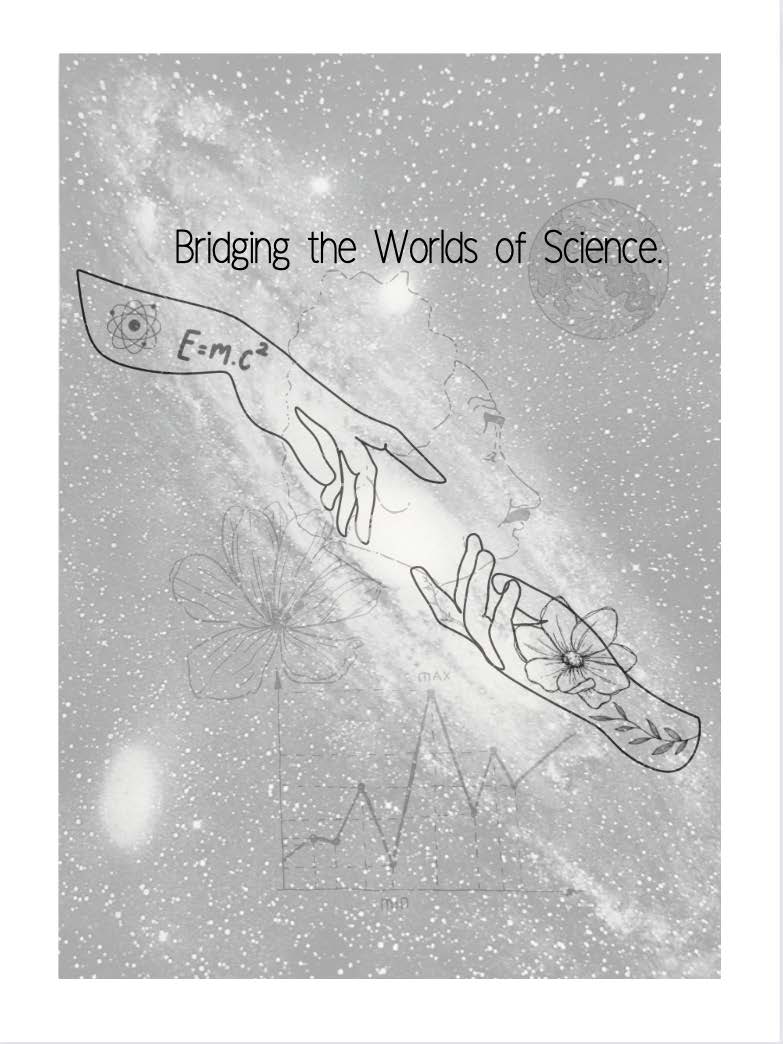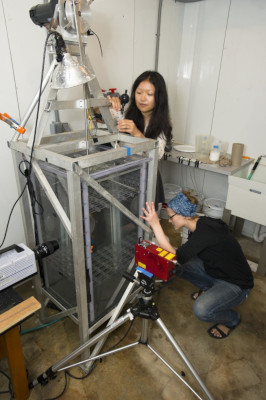Interdisciplinary Research
Bridging the Gap Between Physics and Biology with Dr. Jeanette Wheeler
By Alyssa Forget

What do you want to be when you grow up? No matter how many times an adult would ask this question, I would consistently give a different response; maybe a pilot, or an officer, but I also love traveling and have this overwhelming need for adventure. Although the question seems simple, it never failed to get my heart racing. Oftentimes managing and completing daily tasks seemed very unpredictable, nevermind deciding on a lifelong commitment. The pressure of choosing one sustainable career path from the many professions that you won't lose interest in after decades can be daunting. But it doesn’t have to be. After meeting with Dr. Jeanette Wheeler from Memorial University I saw a new way of approaching work where careers can follow an unfamiliar and peculiar road, as did Dr. Wheeler’s journey through the many disciplines of science. Science, like life, is not divided and compartmentalized, but intertwines and interconnects, each breakthrough peeling back new layers ofof understanding. Approaching education through an interdisciplinary perspective creates the flexibility and freedom to explore and experience many different career paths in one lifetime.
Dr. Wheeler, a biophysicist, explores the effects of fluid dynamics on plankton, which rely on waves to move and eat. Therefore, how fast and what direction waves move affect how the plankton behave and interact with their environment using math to explain the biology. Dr. Wheeler’s academic background in applied mathematics and ecology provides a strong foundation for her studies, changing the way she approaches the study and results. As Dr. Wheeler explained, “incorporating cross-disciplinary
research is vital when working towards a scientific problem because the different branches of science work well together to tell a story that you wouldn't be able to see
just by looking and using one individual discipline. In essence, everything is always complicated by everything and attacking the problem from multiple angles can leave
you with a richer understanding than following a traditional single subject silo approach.”

But interdisciplinary science also creates many challenges, especially during communication when trying to find a common language. As Dr. Wheeler expressed, there is a “lack of a very clear path for students interested in interdisciplinary work.” She recalled often “bouncing around along a random trajectory guided by luck and serendipity. When thinking of research problems it often takes you in weird and new directions.” Many struggle to incorporate interdisciplinary work into the curriculum as there are no clear programs or templates to follow on how to become an interdisciplinary scientist. However, many interdisciplinary scientists are trailblazers, foraging their own path in scientific research based on personal interests and spontaneous ideas. However, as Dr. Wheeler explained, “learning to think and frame problems in an interdisciplinary way such that they can be answered using an interdisciplinary approach is an important skill in both communication and collaboration.” Many disciplines use different words to describe their observations and getting everybody on the same page concerning questions being asked is no simple feat so it is important to boil down ideas into simple terms. As Dr. Wheeler says “nobody learns anything if you do not try to distill your ideas down to simple ideas. You cannot use jargon or technical language because other people are not going to understand you. If your goal is to have somebody understand you and move your project forward, you must explain your ideas in a way that everybody can understand, which just takes practice.” Everybody wants to fit a consistent story that satisfies all areas of science, the hallmarks of a good collaboration, making interdisciplinary science a crucial method of connecting and understanding life.
Despite these challenges, there is still a place for single disciplinary scientific approaches in research and academia. As Dr. Wheeler suggests, “everybody should go outside their area of expertise after building a solid foundation.” Interdisciplinary science offers new methods and approaches to problem-solving, allowing scientists to dive deeper into the understandings and inner workings of the universe. Like all scientific breakthroughs, new paths must be foraged, and interdisciplinary science is no exception. Instead of asking what do you want to be when you grow up, ask what do you want to learn more about? What question do you want to solve and who else can help get you to the solution? Life is not about the endpoint or the jackpot, but about the journey along the way.